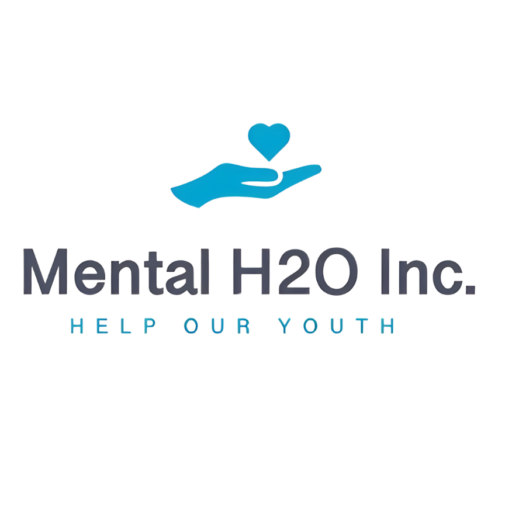It cannot be reiterated enough how critical, to well-being in general, mental health awareness and education are. With society still adapting to the nuances of mental health, there has never been a more important era to understand and address mental health issues. Mental health awareness involves recognizing the prevalence and impact of mental health conditions. On the other hand, mental health education involves equipping the individuals with knowledge and tools to manage these conditions effectively. Together, they create a more supportive and informed society.
Understanding Mental Health
The term “mental health,” refers to our emotional, psychological, and social well-being. Essentially, it impacts the way we think, feel, and behave. Mental health determines how we cope with our problems, interact with other people, and make decisions. A good mental state of being is all very important for all stages of human life. They can affect just about anyone irrespective of age, gender, race, or socioeconomic status. Mental health conditions such as depression, anxiety, bipolar disorder, and schizophrenia are quite common, and can affect just about anyone, irrespective of age, gender, race, or socioeconomic status. According to the World Health Organization (WHO), one in every four people from around the world will experience some kind of mental health issue at some point in their lives. Despite the worldwide awareness about mental health disorders, stigma and lack of accurate information is still a universal barrier in the path of effective treatment and support.
The Importance of Mental Health Awareness/ Education
Increasing mental health awareness across the globe is extremely important to make a positive impact on people struggling with mental health. Ensuring that the majority of a population understands the basics of mental health. It enables people to recognize signs of mental illnesses and to be properly informed. There are a couple of ways to spread awareness.
- Reducing Stigma
One of the biggest barriers for treatment of mental health is the stigmasurrounding mental health conditions. The Merriam-Webster Dictionary defines stigma as, “A set of negative and unfair beliefs that a society or group of people have about something.” Stigma often can cause discrimination and exclusion from the environment that a person lives in. This usually results in reluctance to seek treatment for their mental health. Raising awareness for mental health helps to normalize mental health conditions, reduce stigma against these disorders, and seek the help they need. Having open, non-judgemental discussions about mental health will encourage more people to reach out for support. - Encouraging Early InterventionInterventions are defined as, “When you encourage someone to get additional support before their mental health worsens and symptoms deteriorate” (FutureLearn, 2023). An early intervention is encouraging someone struggling with their mental health to seek treatment before their condition worsens. Early intervention in mental health is very important. The earlier a mental health condition is identified and treated, the more effective the treatment is likely to be. Awareness can help educate people on the signs and symptoms of mental illnesses, thereby enabling individuals to know when their loved ones need help.
- Promoting Mental Health LiteracyMental health literacy involves understanding different types of mental health conditions. This entails being able to recognize certain symptoms and act accordingly. In other words, mental health literacy empowers individuals to take charge of their mental health. The greater knowledge one possesses, the better their coping skills and mental health management skills.
- Fostering Empathy and SupportMental health awareness encourages people to show empathy and understanding within communities. When people are informed about mental health, they are more likely to offer support and compassion to those who are struggling. This fosters a more inclusive and supportive environment, in which everyone can feel safe sharing their experiences with mental health.
Educating the Population
A society is often divided into many different groups of people. Educating each group requires different approaches to be the most effective. Ensuring that each group understands the basics of mental health is extremely important. There are three main sections of people that must be educated about mental health to raise awareness. These three groups include youth, educators, and adults/employees.
1. Educating the Youth
Schools play a critical role in mental health education. Children under the age of 18 often still have a rapidly developing brain. Children are like sponges; they absorb anything they learn about (The Power of Words). Because it is so easy for children to learn and retain information, it is vital to incorporate mental health education into the curriculum. Teaching children and adolescents about mental health promotes resilience, emotional intelligence, and healthy coping mechanisms. Ensuring that mental health conditions, treatments, and illnesses are taught in school properly prepares the youth for any issues they face in the future.
- Educating the Educators/ProfessionalsMental health education should extend beyond students to include educators and other professionals who work with young people. It is important to ensure that the people we trust with educating us and our youth are qualified enough. Teachers, school counselors, doctors, and others should be trained to properly recognize the signs of mental health conditions and know how to respond appropriately. Ensuring that our educators are qualified enough to teach the rest of us results in a more informed society.
- Workplace Mental Health EducationEducation on mental health is also very critical in the workplace. Employers can provide this education by training their managers and workers, developing policies on mental health, and ensuring relevant resources, such as employee assistance packages. Properly preparing adults in the workforce creates a knowledgeable community that supports mental health.There are various cases in which workplaces have been developed to be mentally healthy. Of such cases, benefits include increased productivity, reduced absenteeism, and improved morale of employees.
Conclusion
Mental health awareness and education are both essential components of a healthy society. Raising awareness of mental health through the 4 strategies properly educates society to be more accepting and supportive towards mental health. Targeting the three main sections of the population allows each group to be informed. While we as a society continue to advance our knowledge of mental health issues, investing in these efforts is critical to ensure that everyone has what they need to know to attain and sustain mental wellbeing.
Written By: Nimai Pradeep, Mental H2O Youth Resource Writer
Works Cited
- ● FutureLearn. (2023, May 15). What is a mental health intervention? https://www.futurelearn.com/info/blog/what-is-a-mental-health-intervention#:~:text=Put %20simply%2C%20a%20mental%20health,and%20lead%20a%20happier%20life.
- ● The power of words. TMW Center for Early Learning + Public Health. (n.d.). https://tmwcenter.uchicago.edu/share/the-power-of-words/#:~:text=Early%20Brain%20D evelopment,brain%20connections%20is%20to%20talk.
- ● The World Health Report 2001: Mental disorders affect One in four people. World Health Organization. (2001, September 28). https://www.who.int/news/item/28-09-2001-the-world-health-report-2001-mental-disorde rs-affect-one-in-four-people
- ● “Stigma.” Merriam-Webster.com Dictionary, Merriam-Webster, https://www.merriam-webster.com/dictionary/stigma. Accessed 15 Jun. 2024.


